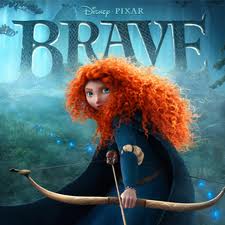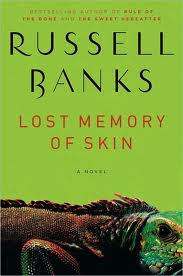The best thing about teaching (for me) is forging intellectual connections with students that benefit both of us. Those interactions start in the classroom, but they don’t always end there. One of the best things about Facebook is that it makes keeping in touch with former students so much easier than it used to be, and sometimes Facebook even helps continue the conversation that starts in the classroom.
I finally got around to seeing Brave last week. Not that I didn’t feel the need to see it before (after all, I’m a feminist scholar as well as a critic), but the summer has been busier than usual. Okay, that’s a lame excuse.
Still, when I got there, what I found thrilled me. Finally, a Disney movie that doesn’t traffic in the tired and troublesome absent mother theme that I have belabored for years and years in my Film Theory and Criticism classes (to be honest, probably in most of my classes – it annoys me that much). It’s just makes me, a mom, furious to see how storytellers have repeatedly made mothers uniformly dispensible. What are we, worse than chopped liver?
Brave is a sharp departure from the major animated films that have preceded it; not only is there a strong female lead carrying the film, but the narrative is a tale of mother-daughter reconciliation. Remarkable!
As I walked to my car after the matinee carrying a light heart and wearing a big smile, I thought of Erin McInnis, an excellent student of mine from a few years ago.
I recalled a paper conference we once conducted in my car while I was driving to pick up something I’d forgotten for class (thankfully that almost never happens, though it does make that particular meeting memorable for both of us).
Erin wanted to write her research paper on one of our shared pet peeves – the absent mother in Disney films and the implications of that construction in various narratives. Her enthusiasm matched my own, which led me to feel a little maternal over the emerging project!
So, what did I do as soon as I got home from seeing Brave? I Facebooked Erin to see if she’d seen the movie, feeling certain she would have. Here’s part of our exchange; she wrote:
I was thrilled to see the mother/daughter narrative! I couldn’t believe all the people who were upset because they felt Pixar/Disney pulled a bait-and-switch on them between the trailers and the actual film! It needed some work, yes, but I was excited about the whole idea. And I found it interesting that usually it’s the central character that has to undergo the transformation to change themselves for the better but this time, she caused the change in someone else. I found it fascinating!
She is right! Very interesting point that the mother character has the character arc in the film because this adds some complexity to the story and fits with contemporary audiences in ways that should resonate.
I also figured out from her post why I may have avoided going to see Brave at first. From the preview trailer, it looked like another father-daughter story. Aha! It looked like the same old story, but it wasn’t. If that’s a bait-and-switch, as Erin mentioned, I’ll take it!
Not as personal as a car conference, and it would have been nicer to have actually seen the movie with Erin or to have discussed it in person over a cup of tea or a glass of wine, but Facebook does facilitate continued connection for which I am grateful (even if I didn’t convert to Timeline until I was forced and still don’t like it – another pet peeve).
Regardless of the communication medium, however, I love it when my students turn out to be smarter than I am. Their insights make me feel like I’m doing my job well.

